With customer expectations constantly rising, building a seamless experience in all areas of your business is essential for staying competitive. Now, let’s dive into what digital customer experience is and why a strong strategy is important for success.
Table of Contents
- What is digital customer experience?
- Digital Customer Experience Best Practices
- Digital Customer Experience Trends
- The Importance of a Great Digital Customer Experience Strategy
- Digital Customer Experience vs. Customer Experience
- Building a Customer-Centric Digital Future: Why It Matters
What is digital customer experience?
Digital customer experience, or digital CX, refers to the total online interactions a customer has with your brand. Most interactions take place on your website or app. Yet other channels like social media, email, and live chat also play a role in how customers connect with your brand online.
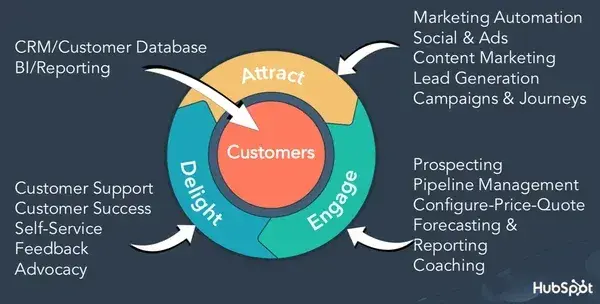
The Importance of a Great Digital Customer Experience Strategy
Creating a delightful online experience with your product or service has become increasingly important.
Any number of competitors can meet the needs of your target audience, but if they look forward to interacting with you, they won't look to anyone else.
Digital CX touchpoints, such as chatbots and online forms, are just the beginning of a larger experience structure.
A thorough and thoughtful customer experience strategy gives you more control over how customers perceive your company. It helps you understand what works and what doesn’t, so you can continually improve and keep both existing and new customers happy.
For example, those new leads should be able to easily navigate through the content on your website and understand why they should purchase from you. Returning customers should have access to customer success and support features built into your app's user interface.
In addition to reaching consumers where they are in their customer journey, a seamless digital experience is crucial when it comes to customer satisfaction.
It lets you anticipate and map out how users move across your different online channels (more on that later!). Plus, great digital CX facilitates a cohesive experience that nurtures customers through every stage of your flywheel.
As part of HubSpot's “Gain Grow Retain” podcast series, Gainsight Customer Success Evangelist Dan Steinman joined the show to discuss digital customer success. Listen here to Steinman discuss the importance of digital CX for your business.
Digital Customer Experience vs. Customer Experience
Digital customer experience is a key component of customer experience.
We know that customer experience, or CX, is the impression you‘ve left on your customers throughout their entire journey with your brand. It’s a combination of customers’ interactions with your people and your products.
Think of digital CX as the online arm of your company‘s overarching CX strategy. It’s the digital mediums your customers use to interact with those people and products. And, the perception they take away based on their experience.
Let's review some best practices you can use to optimize digital CX at your company.
Digital Customer Experience Best Practices
Know your audience. Create an omnichannel customer experience. Pay attention to mobile experiences. Adopt analytics. Collect customer feedback. Conduct user testing. Think like a futurist.
1. Know your audience.
Before creating a digital experience that your customers will love, you have to know who your customers are.
Buyer personas are a great way to understand who is buying your product and why. Personas make it easier to tailor your digital CX strategy to meet your target audience's specific needs and desires.
Collecting online forms from potential leads is the best way to let people interested in your offering introduce themselves and their needs.
Commonalities among answers on initial forms can help you better understand how you are first perceived. They can even indicate what you can provide in the future to meet more of your customers' needs.
Crafting, tracking, and revising the customer journey from beginning to end is critical for building excellent CX.
Mapping out the customer journey can help you determine which digital touchpoints are most important for your customers so you can optimize those points.
Luckily, there are advanced marketing reporting tools specifically tailored to help you develop your digital customer experience.
2. Create omni-channel customer experiences.
In my experience, a lot of companies confuse multichannel and omnichannel, but the key differences come down to data syncing and CX continuity.
Multichannel vs. Omnichannel
Multichannel just means being present on several platforms, but those platforms often work in isolation, creating a disjointed experience. Customers end up repeating themselves or feel like they’re dealing with different businesses, depending on the channel.
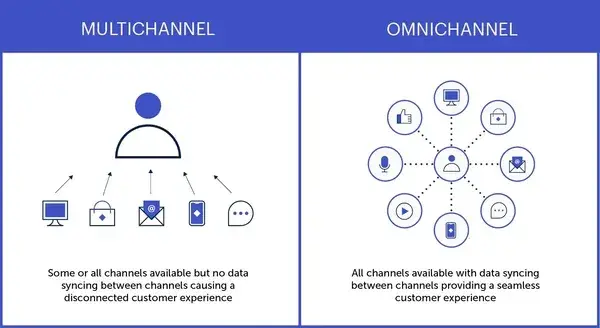
Omnichannel, on the other hand, is all about integration. Picture a customer browsing your website on their mobile app, adding items to their cart, then completing the purchase through a chatbot.
With data syncing in an omnichannel setup, all of these interactions are connected, so the customer’s history and preferences are available across every platform. This makes the experience seamless and personalized.
3. Pay attention to mobile experiences.
Whether you have a detailed website or a handy app, it's important to focus on the mobile experience. After all, over 90% of the global internet population uses a mobile device to go online.
That's because smartphones allow customers to compare companies while they shop. They can see how your brand stacks up against your competitors before they make a purchase.
If your website or app doesn‘t seem to fit their needs, chances are your products won’t either.
When designing your digital customer experience, make sure it‘s mobile-responsive. That means when it’s displayed on a tablet or phone, the interface automatically adjusts to the smaller screen.
This dramatically affects the user experience and makes it much easier to navigate through your content.
4. Adopt analytics.
In my web development and social media marketing work, using data-driven insights is critical to shaping an exceptional digital customer experience.
Tools like Google Analytics and social media metrics allow me to understand user behavior on a deeper level. From identifying where visitors drop off during checkout to discovering which social media posts resonate most with audiences, these insights guide every decision I make to optimize the customer journey.
For example, analyzing user flows has helped me streamline navigation for websites I’ve built, reducing friction and improving conversions.
Having the right tools to centralize data and track interactions can make all the difference. Being able to manage campaigns while keeping digital CX front and center has been invaluable in my work. If you’re exploring ways to elevate your strategy, it’s something I’d definitely recommend looking into.
5. Collect customer feedback.
One of my favorite ways to gather information is by asking customers for their feedback. Have them complete a survey after using your website or app and ask if they would recommend it to their peers.
You can use a Net Promoter Score, or NPS, survey to gather both qualitative and quantitative data on your digital customer experience. While there are other metrics you can look into as well, this should give you a good idea of how customers are reacting to your content.
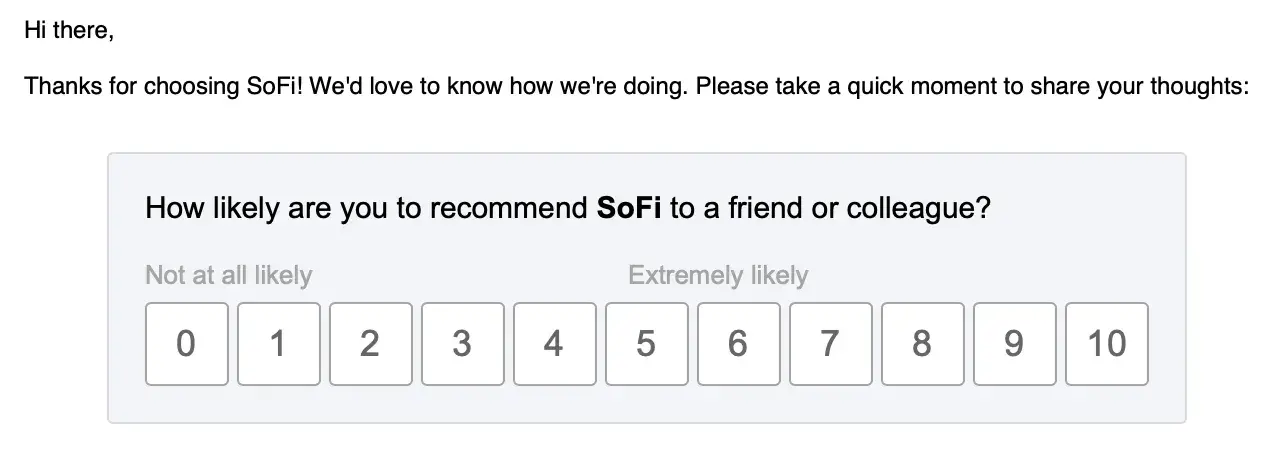
Sample survey questions may include:
- On a scale of 0-10, how likely are you to recommend our business to a friend or colleague?
- Which product/service features do you value and use the most?
- How can we improve your experience on our app?
6. Conduct user testing.
User testing is another way to determine how much customers enjoy using your digital properties. In this environment, a select group of customers is asked to test your product. Then, they provide feedback on specific aspects of the user experience.
This gives you the chance to tweak your website or app before releasing it to the rest of your customer base. While there are a few different types of user tests, the most popular one is usability testing.
Usability tests assess how easy it is to use and navigate your product. Participants are asked to perform a simple task. Then, they're evaluated on their ability to complete it. This shows your development team how user-friendly your website or app is.
One easy way to go about this, if you have an active online community, is to ask a segment of that group to participate in a usability test. It benefits both parties in the end to have a quality experience built on real user preferences.
7. Think like a futurist.
This is my favorite part — thinking like a futurist. The digital landscape is advancing faster than ever, and as we approach 2025, staying competitive means rethinking how we use emerging technologies to elevate digital customer experiences.
Consider industries like healthcare, where AI is transforming patient care. Platforms now integrate real-time data from wearable devices, providing physicians with the ability to have continous insights into a patient’s health.
This proactive approach means doctors can anticipate issues and deliver personalized interventions before problems escalate. Patients, in turn, get a more seamless, connected experience – one where their data follows them across devices and systems, creating a sense of continuity (there’s that word again) and care that builds trust.
This isn’t limited to enterprise-level players, either. With the rise of AI marketplaces and no-code solutions, even startups can harness these tools to innovate.
Thinking like a futurist means staying informed about advancements, like how conversational AI is evolving to handle increasingly complex queries, and being bold enough to pilot these technologies in your business.
The key is experimenting, adapting quickly, and creating digital experiences that make customers feel truly understood and valued.
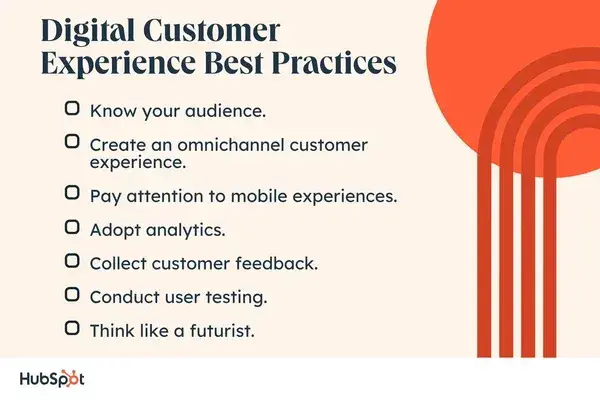
Digital Customer Experience Trends
- Improvements in AI
- Increased Number of Chatbots
- Enhanced Self-Service Capabilities
- More Focus on Predictive Analytics
- New Augmented Reality Tools
- Personalized Customer Experiences
- Emphasis on Data Security and Privacy
Speaking of trends, let's review a few digital trends that businesses are following in 2025.
1. Improvements in AI
A great example is how AI is used in email marketing. Businesses can send mass emails that still feel personal and tailored to each recipient.
AI pulls customer data from CRMs and customizes the message, making it appear as though it was written specifically for that person – without burdening employees with the task of doing it manually.
AI is advancing rapidly, and over the next few months, we’ll see new features hit the market. While change can be daunting, leveraging AI now is one of the best ways to stay competitive.
At HubSpot, for example, we’re already rolling out exciting new AI tools to help businesses deliver even more personalized experiences.
2. Increased Number of Chatbots
Chatbots are about to explode in the retail space. In the past, bots were very limited and could only perform a predetermined series of actions. This made for dull customer experiences that often did not provide the needed solutions.
There's still a lingering stigma that chatbots are just talkative phone trees that lead nowhere until you ask for a human being to speak with. The good news is that chatbots are improving along with AI like a tide raising the ship. Juniper Research forecasts that global retail spend on chatbots will increase by 470% over the next five years.
This spending trend will significantly reduce the pressure on support teams to answer routine questions. These automated systems will be able to handle tasks like opening support tickets and routing them to the right people, making the whole process more efficient.
With the implementation of chatbots, support agents can refocus their time and energy on complex or time-sensitive cases that are more likely to result in customer churn.
But, like your overall digital CX strategy, chatbots can't simply be set up and left to do the work. They need guidance on improving the customer experience at key points in the journey, helping the chatbot become more useful and ultimately deliver the best experience possible for the customer. Consider setting aside time daily or weekly to fine-tune your bot based on its user interactions.
Also, spend a few minutes with this video that remains at the heart of the chatbot wave and provides guidance on using chatbots for your business.
3. Enhanced Self-Service Capabilities
Customers don‘t want to wait long (or at all) for support if they don’t have to. More companies are focused on finding ways to help customers quickly help themselves.
In addition to chatbots, this may include:
- Knowledge bases. These searchable databases allow customers to find resources about your products and answers to FAQs. This makes the information-seeking process faster for customers. Plus, it releases some of the burden on your customer service team.
- Workflow automation. This involves setting up self-operating processes that run manual tasks, saving time and resources. For example, a customer requests a return on your website. An email is automatically triggered to send them the return label, rather than waiting for a customer service rep.
4. More Focus on Predictive Analytics
Predictive analytics determine how customers will react to changes in your business. These reports help business leaders understand customer behavior and the company‘s role in their customers’ lives.
As AI and machine learning continue to improve, we can expect predictive analytics to become a fundamental tool used by companies with a digital presence.
These reports will be built into the internal user interface and updated with the most recent customer data. That way, business leaders will have all the information they need to confidently make decisions for their company.
5. New Augmented Reality Tools
Augmented reality (AR) presents fun, new opportunities to improve digital customer experience. If you‘re unfamiliar with AR, it’s a technology that supplements real images with digital elements, such as graphics or text overlays. While it’s been around a few years now, it’s still picking up steam.
Here's an example from a school in Berkshire, England, that is leveraging VR and headsets to learn and expand in a variety of interactive lessons within the metaverse.
There's a lot of potential for the use of AR in customer service, too. For example, some brands have used it to supplement in-person customer experience by displaying product information as customers shop.
When customers are in the store, they might use their smart devices to scan a product and see data such as customer reviews and product details. This reduces friction during the buying process, making it easier for customers to find the product or service that's right for them.
Another popular AR trend is the “try-as-you-buy” experience. If your company operates mostly online, you can let customers test your products using an AR version on their computer. That way, customers can avoid the hassle of buying your product or asking for a sample only to return it a few weeks later.
6. Personalized Customer Experiences
According to research, 70% of consumers would willingly provide personal data if they knew it was being used to improve their experience.
This means customers are willing to give you information. In return, they ask that you meet them where they are in their customer journey.
One great way to personalize a customer's shopping experience is to send them an email with product recommendations based on their recent browsing or purchase history. This communicates to your customers that you are using data to help them, making it easier for them to find what they want and need.
As you continue collecting customer data, creating personalized customer experiences will be easier.
Not only will you strengthen your understanding of your customer base, but you‘ll also have the technology needed to distribute content effectively. What’s more, you'll be able to automate this personalization to maintain a delightful customer experience as your business grows.
7. Emphasis on Data Security and Privacy
With all of this data comes great responsibility.
Yes, customers are willing to share their data with you, but they expect it to be properly protected and used for the right reasons. Roughly 71% of consumers would stop doing business with a company if it mishandled their sensitive data, highlighting the importance of prioritizing data security and privacy.
These types of violations can also severely damage customer trust and drive them away from your brand. Protecting customer data is vital for maintaining a positive reputation and building long-term relationships.
Keep up with the latest privacy laws and regulations that affect your business relationships with customers. Regularly audit your data practices, update privacy notices, and adopt procedures for handling new consumer rights and opt-out requests.
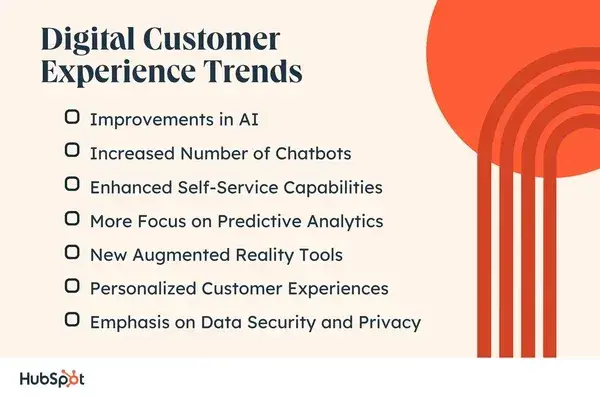
1. Warby Parker's Virtual Try-On

Warby Parker, known for its affordable and stylish eyewear, was an early adopter of augmented reality in its digital customer experience. Their app allows customers to virtually try on glasses from the comfort of their homes, tapping into the convenience of online shopping and the growing AR shopping trend.
This forward-thinking approach paid off, especially during the pandemic when in-person shopping became challenging. Suddenly, being able to try on glasses or makeup virtually wasn’t just a cool feature. It was a necessity.
But beyond the obvious benefits, their use of AR has broader implications for accessibility and inclusivity, demonstrating their commitment to serving a diverse customer base.
Their early adoption of AR, combined with their focus on a seamless mobile experience, allowed them to stay ahead of the curve and meet their customers where they were — online and on their phones. This highlights the importance of anticipating customer needs and leveraging technology to create engaging and accessible digital experiences.
What I like: Warby Parker’s approach really caught my attention since they went AR beyond the clear advantages. While digitally trying on glasses is entertaining, what really distinguishes this use of technology is how it makes eyewear more accessible to persons with mobility issues or those without simple access to transportation. It’s a perfect illustration of how digital experiences can propel equity and accessibility, transcending basic convenience.
2. Apple's Omni-Channel Experience
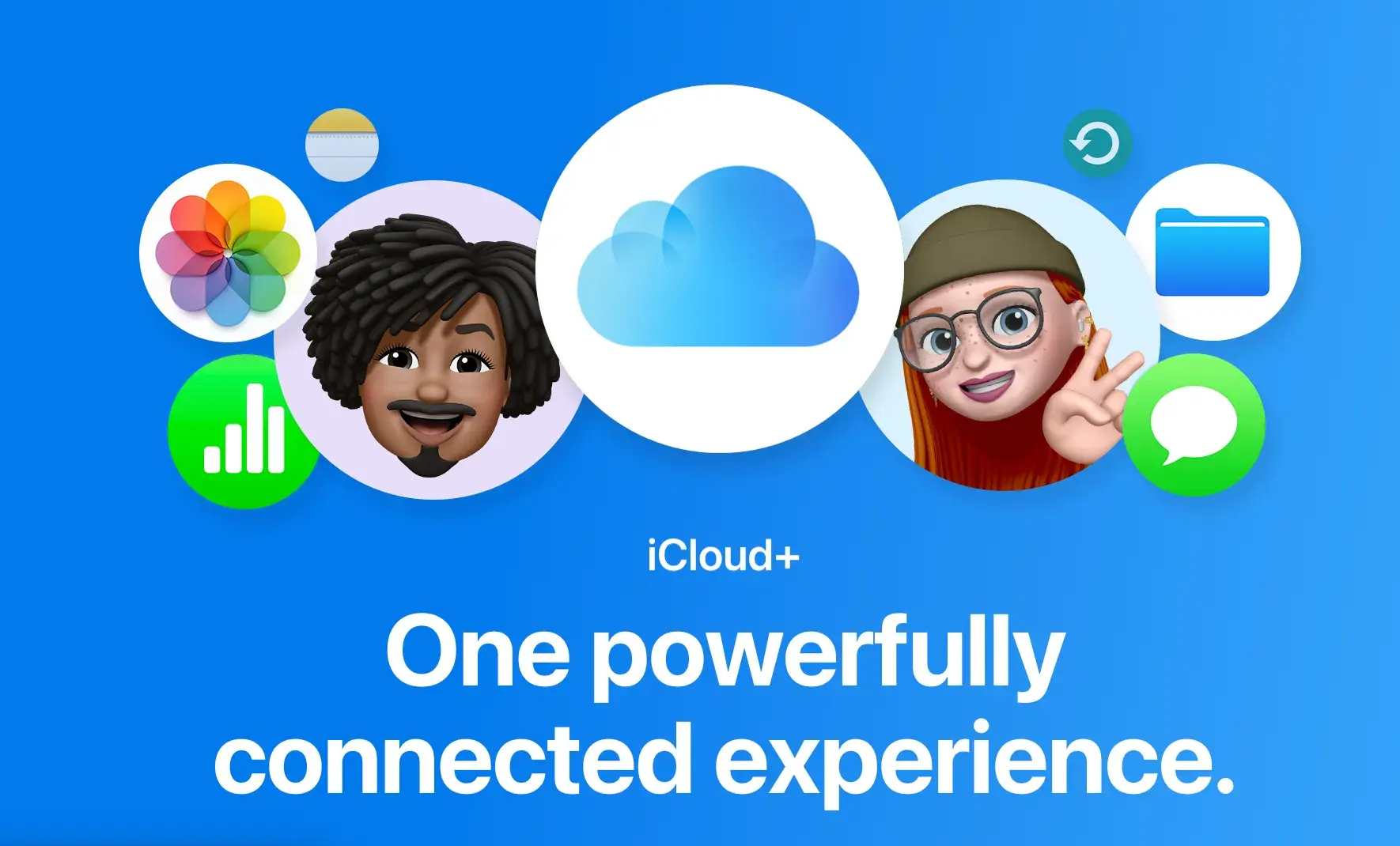
Apple is a great example of a company that has created a seamless digital customer experience based on the customer's data.
Through iCloud, customers always have access to their data — like messages, photos, and contacts — and this is true regardless of which Apple device they're using.
It also extends beyond Apple devices. Users can access their digital storage by simply signing into iCloud from any device with an internet signal.
This has made each iCloud user's digital life fit more harmoniously with their physical life in ways that affect connectivity and culture.
Consider one service they offer: AirDrop. Once upon a time, you had to store a file on a single, physical device.
Sharing it was a multi-step process that could be tripped up by file size, your recipient not having the right program, and other tedious problems caused by mismatched technology.
So much friction just trying to share a file — all while sitting right there at the same table! Oof.
With two AirDrop-enabled devices, you can just choose a file to send and tap AirDrop. It automatically transfers to the other nearby device, and you can move on with your idea sharing and projects much faster.
Pro tip: Some folks use digital storage far more than others, so Apple's iCloud storage comes in various sizes and prices. Their goal is to provide what people need to maintain their own continuity of experience.
3. UNICEF's Chatbot for Societal Change
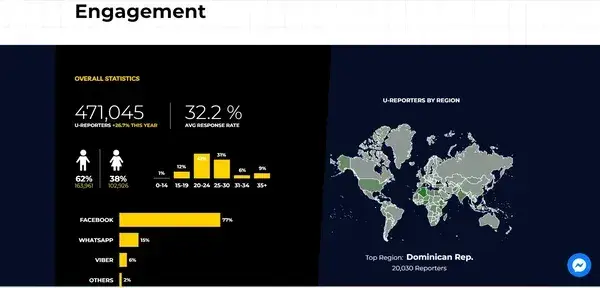
I’m inspired by how organizations are using chatbots for more than just customer service. UNICEF, for example, has a chatbot-based polling system called U-Report. It gathers crucial feedback from underserved communities worldwide, often young people in developing countries, on important societal issues.
This gives a voice to those who might not otherwise be heard, and UNICEF uses this information to shape policy recommendations and drive positive global change. It’s a powerful example of how digital tools can be used creatively to make a real-world impact and improve lives.
What I like: I’m seeing both retail companies and non-profits finding incredibly innovative ways to use chatbots. It’s exactly this kind of creative thinking that pushes boundaries and shapes the future of digital customer experience.
Building a Customer-Centric Digital Future: Why It Matters
Having worked in customer experience for years, I’ve always understood the importance of digital customer experience. But, as I explored the topic further, I was reminded of just how critical it is for businesses to refine their digital CX strategies continuously.
The deeper I dug, the more I realized that a truly effective strategy goes beyond engaging customers. These days, it’s really important to prioritize seamless and personalized experiences, while leveraging the latest AI tech.
As I revisited best practices, I realized how essential it is to build trust and reliability in every customer interaction. Whether it’s offering accurate, helpful information, providing just a little more personalized support, or ensuring data security is on point, each touchpoint strengthens the relationship between your brand and your customer.
If you’re ready to take your CX strategy to the next level, take a look at our free CX resources or reach out to our team at HubSpot to see how we can help you build stronger customer relationships and drive real business growth.
Editor's note: This post was originally published in February 2021 and has been updated for comprehensiveness.
Customer Experience


.webp)


![Is The Customer Always Right? [What It Means + Why It Matters]](https://53.fs1.hubspotusercontent-na1.net/hubfs/53/customer-is-always-right-origin-1-20250202-6448090.webp)






![14 Best Practices for B2B Customer Experience [New Data]](https://53.fs1.hubspotusercontent-na1.net/hubfs/53/b2b-customer-experience_2.webp)